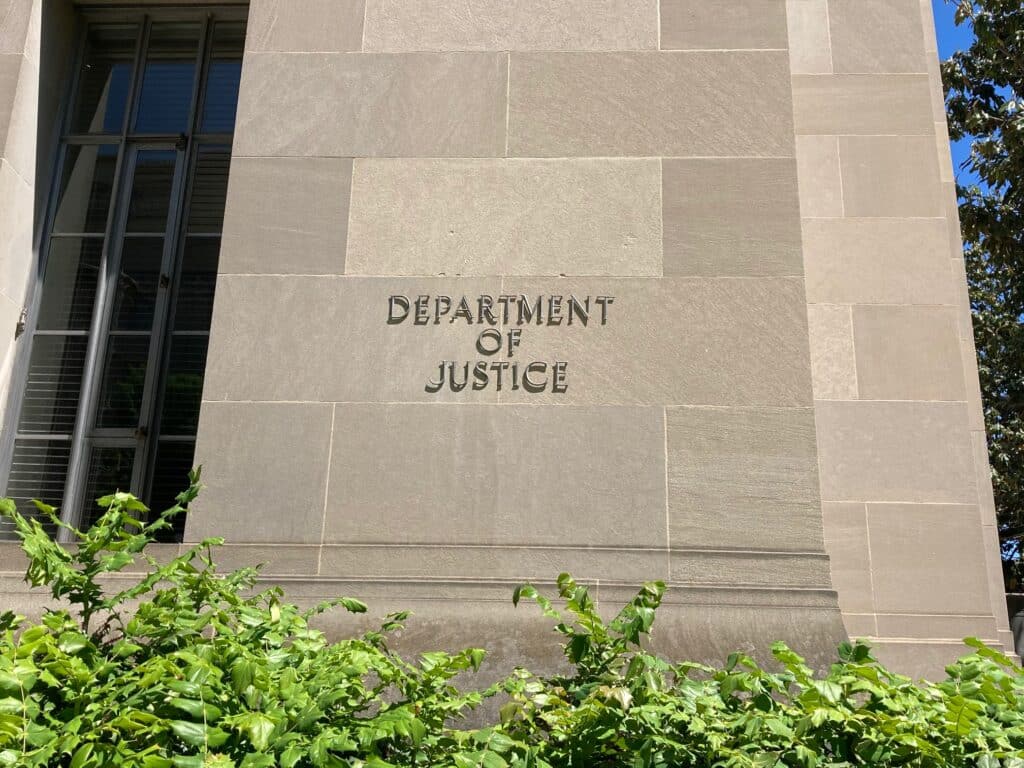On February 7, the U.S. Department of Justice (DOJ) published information from Fiscal Year (FY) 2022 about settlements and judgments from the False Claims Act. In 2022, whistleblower lawsuits led to over $1.9 billion in recoveries, and qui tam whistleblowers won a combined total of $448 million.
The False Claims Act contains qui tam, or whistleblower, provisions that enable private citizens to file lawsuits alleging false claims on behalf of the government. If the government prevails in a qui tam lawsuit, the whistleblower can receive between 15 and 30 percent of the monies recovered.
The FY 2022 press release includes a link to a document of fraud statistics that records data from 1989-2022. The document contains information on the number of qui tam False Claims Act cases, the number of non-qui tam cases, if the U.S. intervenes in the qui tam cases, and total recoveries in all cases.
How Does FY 2022 Stack Up?
Whistleblower attorney Stephen M. Kohn of Kohn, Kohn and Colapinto (KKC) expressed disappointment that the DOJ “recovered only $776 million in False Claims Act (FCA) whistleblower cases in which it intervened, the lowest total since 2004. In contrast, FCA whistleblower cases where the DOJ did not intervene resulted in a record $1.1 billion in recoveries, according to statistics released by the DOJ on February 7,” according to a press release. In each qui tam case, the government has a chance to “intervene and take over the lawsuit. If the DOJ declines to intervene, a whistleblower may continue to pursue the lawsuit,” the KKC press release states.
“A majority of whistleblowers cannot afford to proceed with qui tam suits without DOJ intervention,” Kohn said. “The DOJ’s continual failure to intervene in strong FCA cases allows fraudsters to walk away with millions in taxpayer dollars.”
Whistleblower attorney David Colapinto explained: “It is also the first time in the history of the False Claims Act of 1986 that whistleblower recoveries in government declined cases exceeded the recoveries obtained by the government in intervened cases. And it wasn’t close. But for the whistleblowers, who recovered over $1.1 billion compared to the $776 million obtained in government intervened cases, this would have been a disastrous year for the government’s most important anti-fraud program.”
False Claims Act Cases in FY 2022: Industries of Note
The DOJ reports that in FY 2022, “[s]ettlements and judgments under the False Claims Act exceeded $2.2 billion” in Fiscal Year 2022, which ended on Sept. 30, 2022. “The government and whistleblowers were party to 351 settlements and judgments, the second-highest number of settlements and judgments in a single year,” the press release states. “Recoveries since 1986, when Congress substantially strengthened the civil False Claims Act, now total more than $72 billion.”
The press release highlights numerous areas from which several settlements and judgements, many of which include totals over a million dollars, originated. One heavy hitter is healthcare: “Of the more than $2.2 billion in False Claims Act settlements and judgments reported by the Department of Justice this past fiscal year, over $1.7 billion related to matters that involved the health care industry, including drug and medical device manufacturers, durable medical equipment, home health and managed care providers, hospitals, pharmacies, hospice organizations, and physicians.”
The DOJ states that, like in FY 2021, health care fraud was again a “leading source of False Claims Act settlements and judgments.” Health care schemes often harm the most vulnerable citizens and erode trust in the medical system. According to the press release, health care-related recoveries from False Claims Act cases “restore funds to federal programs such as Medicare, Medicaid, and TRICARE, the health care program for service members and their families.” The agency also points out that enforcement of these cases act as a deterrent to others “who might try to cheat the system for their own gains.”
The health care category is broken down into five subcategories: Medicaid fraud and abuse, “unnecessary services and substandard care,” cases related to Medicare Advantage, drug pricing, and “unlawful kickbacks.” WNN reported on several of the mentioned cases as part of its regular qui tam coverage, and each of the cases below stemmed from whistleblower complaints.
The other subcategories the press release points to are “fraud matters involving the purchase of goods and services in connection with military and similar programs,” COVID-19-related fraud, and cybersecurity concerns. WNN has extensive coverage of COVID-19 whistleblowers and fraud related to the pandemic: view past articles here.
Qui Tam Whistleblower Cases in FY 2022
The DOJ reported $2.2 billion in settlements and judgments in FY 2022, and of that number, “over $1.9 billion arose from lawsuits that were filed under the qui tam provisions of the False Claims Act and pursued by either the government or whistleblowers.” Consequently, the U.S. government doled out over $488 million in whistleblower awards.
“The number of lawsuits filed under the qui tam provisions of the act has grown significantly since 1986, with 652 qui tams filed this past year – an average of more than 12 new cases every week,” the press release states.
“We are grateful for the hard work and courage of those private citizens who bring evidence of fraud to the Department’s attention, often putting at risk their careers and reputations,” said Principal Deputy Assistant Attorney General Boynton. “Our ability to protect citizens and taxpayer funds continues to benefit greatly from their actions.”
The press release also draws attention to the 1986 amendments to the False Claims Act, an effort led by Senator Charles Grassley (R-IA) and former Representative Howard Berman (R-CA). Currently, the bipartisan False Claims Amendment Act of 2021 remains pending before Congress. The bill, sponsored by Senator Grassley, offers a number of technical fixes to the law.
